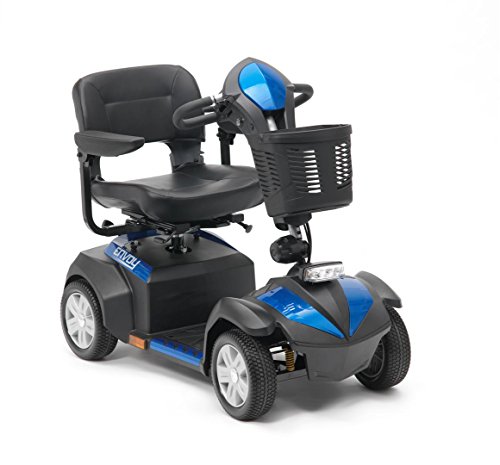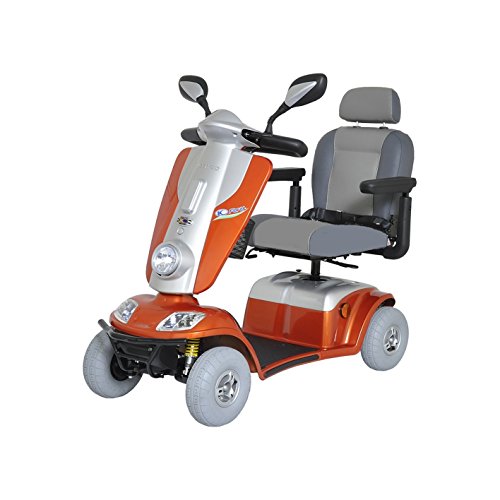7 Little Changes That'll Make A Huge Difference In Your Mobility Scoot…
페이지 정보

본문
 Are Mobility Scooters road legal mobility scooters Legal?
Are Mobility Scooters road legal mobility scooters Legal?Some seniors rely on mobility scooters for daily transport, allowing them to remain independent and delay moving into assisted living facilities. Some are unsure about the laws that govern mobility scooters for road use.
Clarification The mobility scooters are pedestrian vehicles. They must follow the same rules as pedestrians do, such as following traffic signs and stop signs. Furthermore, they cannot be used on paths that are solely for cycling.
Class 1
Class 1 mobility scooters can travel up 8 mph and are road legal. They must have a way to reduce their maximum speed on pavements, and must be equipped with lighting, a powerful brake system, and Horn. A rearview mirror is also essential, as it can help avoid accidents and ensure road legal mobility scooters users are secure. Class 2 scooters are able to be used on roads, but they must be operated at a an lower speed limit of 4 mph. They can also be fitted with indicators and headlights to signal other road users to their presence. They are not permitted in motorways, or cycle lanes.
Apart from having the appropriate safety equipment, it is essential for riders of mobility scooters to be aware of the laws of their respective states. In Arkansas for instance all mopeds and scooters must be registered at the Department of Motor Vehicles. To ensure their visibility they must wear a helmet or reflective clothing or other materials. Furthermore, they should obey traffic rules and give priority to pedestrians walking on sidewalks.
Mobility scooters should be kept in areas that do not block foot traffic or cause inconvenience to other road or pavement users. They should also not park their scooter where it could pose a risk to wheelchair users or pedestrians. It is also recommended to avoid parking your scooter in crowded areas, since you could get in the way of other vehicles or risk damaging your scooter.
You must also yield to pedestrians when using scooters of class 2 or 3. Also, you must give an audible signal before passing a pedestrian. Additionally, you are not able to travel on dual carriageways, though it is possible to do so if equipped with a flashing amber light.
There aren't any guidelines for where to park your scooter. However it is recommended to avoid areas which are likely to be packed. It is not a wise idea to park a scooter in front a cafe or shop since it could cause traffic issues and inconvenience.
class 3 mobility scooter for sale 2
It is essential to know the rules and regulations governing mobility scooters if you plan to use one in public. You will need to register your scooter and obtain insurance. You'll also need to be familiar with the highway code so that you are able to drive safely and aware of any road dangers. It is recommended to attend an instructor-led safety course to learn how to operate and maintain your scooter.
Class 2 mobility scooters are built to be used indoors and on pavements. They can travel at the maximum speed of 4 mph. They're smaller and more maneuverable than their four-wheeled counterparts, and are usually taken apart to make them easier to move in the vehicle. These scooters come with basic controls, lights, and an horn along with a low-speed limit.
The DVLA (Driver and Vehicle Licensing Agency) does not require a driver's license for these scooters. To register your scooter, fill out an application for a V55/4 form if you are purchasing new models or an V55/5 form for used vehicles. They aren't permitted on roads, but are allowed to be driven on sidewalks and walkways for pedestrians so long as they don't interfere with other traffic.
The first step in deciding on the right scooter is to consider your lifestyle and the timeframe you have set. Take note of your daily activities and if you prefer to travel shorter distances in a large area or take longer trips outside. Also, consider your medical history and the kinds of outdoor surfaces you'll encounter. Try out a variety of models after you've determined what you want.
Before buying a class 3 motorbike you must be at minimum 14 years old and possess a full UK driving licence. Also, you must have an insurance card that is valid and register your scooter with DVLA. Unlike class 2 scooters, these models are not exempt from road tax. In addition, you'll need to get a medical certificate from your doctor or GP to prove you're able to perform the task. In addition to registration of your scooter, you'll need to wear a helmet and adhere to all traffic laws. Visit the DVLA's website to find more details on registration requirements and safety measures for mobility scooters.
Class 3
Contrary to popular belief, you do not need a driving licence to operate on a scooter. However there are some requirements that must be met. To ensure your safety and that of others, it is recommended to wear a helmet if you are riding your scooter on pavements or roads where pedestrians are likely to cross. It is also important to ensure that your scooter has been registered with the DVLA, and that it is insured. You should also adhere to the essential road rules, and always wear an appropriate seatbelt.
Class 2 scooters have an maximum speed of 4mph, and are designed for indoor or pavement use. They are smaller and less maneuverable, and are mobility scooters allowed on road able to be disassembled to transport them in a car. Mobility scooters in class 3 are designed for use on roads and pavements. They are also equipped with additional safety features, like reflective reflectors and lights.
Although you don't require license to operate a class 3 scooter, you have to register it with DVLA and insure it. You also have to adhere to the Highway Code, so it is important to familiarize yourself with this before you begin riding your scooter on roads and pavements. It is also a good idea for you to complete a driving class prior to using a mobility scooter on the road. This will allow you to become familiar with the controls and driving rules.
While a class 3 scooter may be driven on roads, it is not allowed to drive it on motorways or bus lanes or 'cycle only' lanes. It is not permitted to use dual carriageways with a speeds that exceed 50mph.
Aspire2 can help you choose the best 8mph mobility scooter mobility scooter to meet your requirements. We also provide an array of accessories and services to help you with your journey. We're here to answer any questions you may have, and even schedule a test ride in our Lewes showroom.
Licensing
Mobility scooters are an excellent tool for people who have lost a portion or all their ability to walk due to a health condition, or old age. These battery-powered devices enable people to recover their independence and improve the quality of their lives, particularly when they travel for long distances. There are a number of factors that should be considered when using a scooter in order to ensure safety and conformity with local laws and regulations. These factors may include wearing a helmet, using light sources and reflectors at night and maintaining the device in good working order.
The majority of states define mobility devices as pedestrian devices and not vehicles. Therefore, they are not required to be registered or licensed with the Department of Motor Vehicles (DMV). Many municipalities have rules and guidelines to operate the mobility scooter. This could include wearing a helmet, adhering with traffic signals, and adhering to speed limits. In addition, it is not allowed to operate on roads or highways, as these are not specifically designed for these conditions and could pose a risk to both the rider as well as other road users.
The maximum speed limit for mobility scooters on sidewalks and pedestrian walkways is usually 4-8 mph, although this may vary depending on the location. Riders should also be considerate of pedestrians and be mindful of their surroundings when operating the device, especially in busy areas.
Furthermore, New Hampshire law requires that all scooters be equipped with signaling devices that are functional, such as turn signals and horns, to improve visibility and promote safer interactions on roadways. This is a crucial safety feature that shouldn't be overlooked. It is also recommended to wear a helmet, and also have insurance to safeguard yourself from injury and damages.
The choice of a mobility scooter ultimately depends on the individual's needs and preferences. Some people may decide that a Class 2-PMD is sufficient for their needs and budget, whereas others might opt for a bigger and more powerful model that has more features. It is recommended to speak with a medical professional prior to purchasing a mobility scooter to ensure that the mobility scooter chosen is suitable for your lifestyle and medical requirements.

- 이전글What Is Compact Electric Wheelchair Uk And Why Is Everyone Dissing It? 24.09.01
- 다음글СИНДРОМ (2023) СМОТРЕТЬ ОНЛАЙН БЕСПЛАТНО 24.09.01
댓글목록
등록된 댓글이 없습니다.

